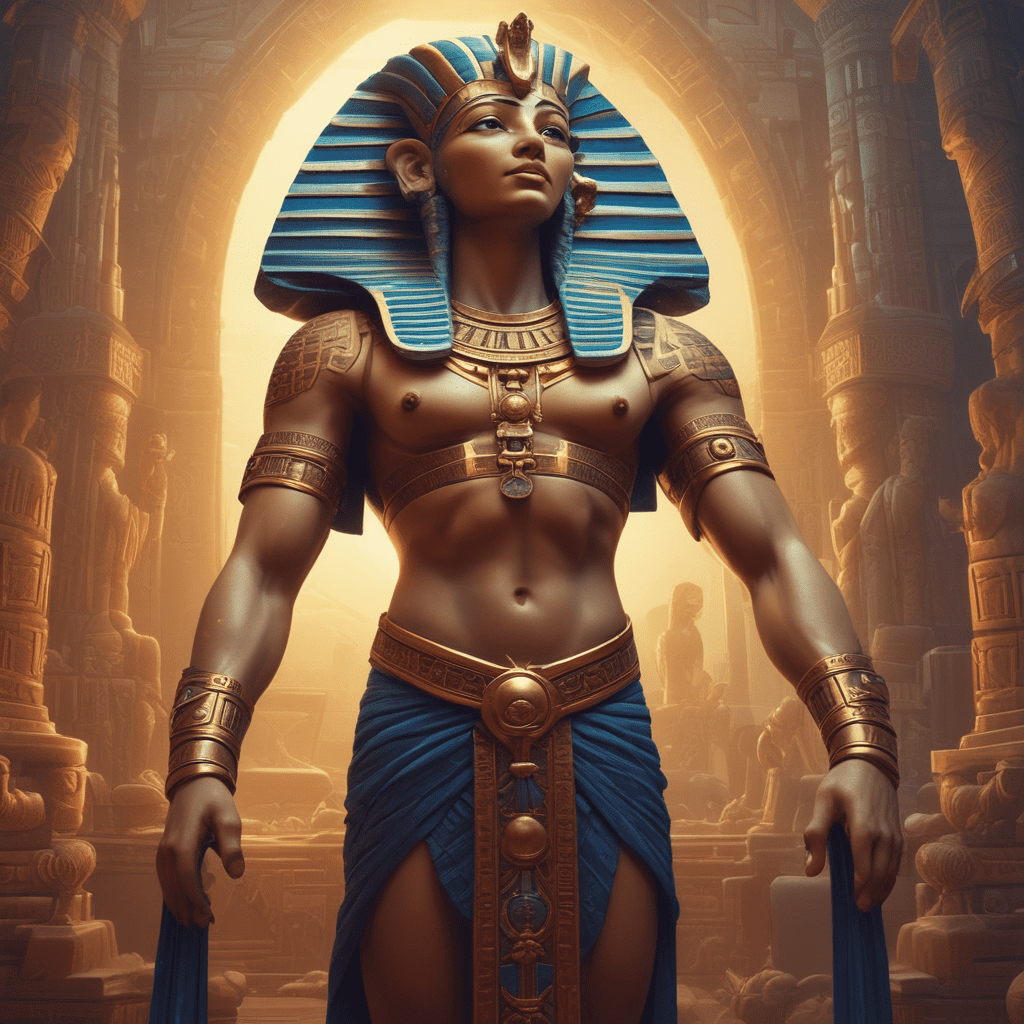The Myth of the God Min in Egyptian Mythology
In Egyptian mythology, Min was a prominent deity associated with fertility, reproduction, and the harvest. Let’s delve into the intriguing myth surrounding this ancient Egyptian god.
Who was Min in Egyptian Mythology?
Min was worshipped as a god of male virility and fertility. He was often depicted as a man with an erect phallus, symbolizing procreation and the regenerative powers of nature. Min was also linked to the desert and the Eastern Desert mountain ranges. His cult center was located at Akhmim in Upper Egypt.
What was Min’s Role in Egyptian Mythology?
Min played a vital role in agricultural practices and was believed to ensure the fertility of the land and the abundance of crops. He was revered by farmers and peasants who relied on a successful harvest for their sustenance. The annual ‘Coming Forth of Min’ festival celebrated his role in ensuring agricultural prosperity.
Symbolism and Worship of Min
Min was often depicted holding a flail and wearing a crown with two plumes. His raised right arm symbolized his strength and power in bestowing fertility upon the land. Worshippers offered prayers and sacrifices to Min to ensure good harvests and healthy offspring.
Min’s association with the phallus symbolized regeneration and the cyclical nature of life and death. He was also linked to the procreative forces of the sun and was considered a protector of the Pharaoh.
The Legacy of Min in Egyptian Culture
Although worship of Min declined during the later periods of Egyptian history, his imagery and symbolism persisted. His connection to fertility and renewal remained significant in Egyptian culture and religious beliefs.
FAQ about the God Min in Egyptian Mythology
Who is the God Min in Egyptian Mythology?
Min is an ancient Egyptian god associated with fertility, masculinity, and the harvest. He was worshipped as a creator god and a protector of the land. Min is often depicted with an erect phallus, symbolizing fertility and regeneration.
What is the significance of Min in Egyptian beliefs?
Min was believed to ensure the fertility of crops, animals, and humanity. His role as a fertility deity made him an essential figure in agricultural practices and rituals related to the land’s productivity. Min was also associated with the pharaoh’s vitality and strength.
How was Min usually depicted in Egyptian art?
In Egyptian art, Min is typically portrayed as a man with an erect phallus, wearing a double-plumed crown and holding a flail or a lettuce symbol. His erect phallus symbolizes procreation and the regenerative powers of nature. The lettuce symbol represents Min’s association with fertility and the harvest.
Where was Min primarily worshipped in ancient Egypt?
Min was primarily worshipped in the city of Akhmim, located in Upper Egypt. The cult of Min was particularly prominent during the Old Kingdom and remained significant throughout ancient Egyptian history. Akhmim was considered the center of Min’s worship, with temples dedicated to him and annual festivals held

